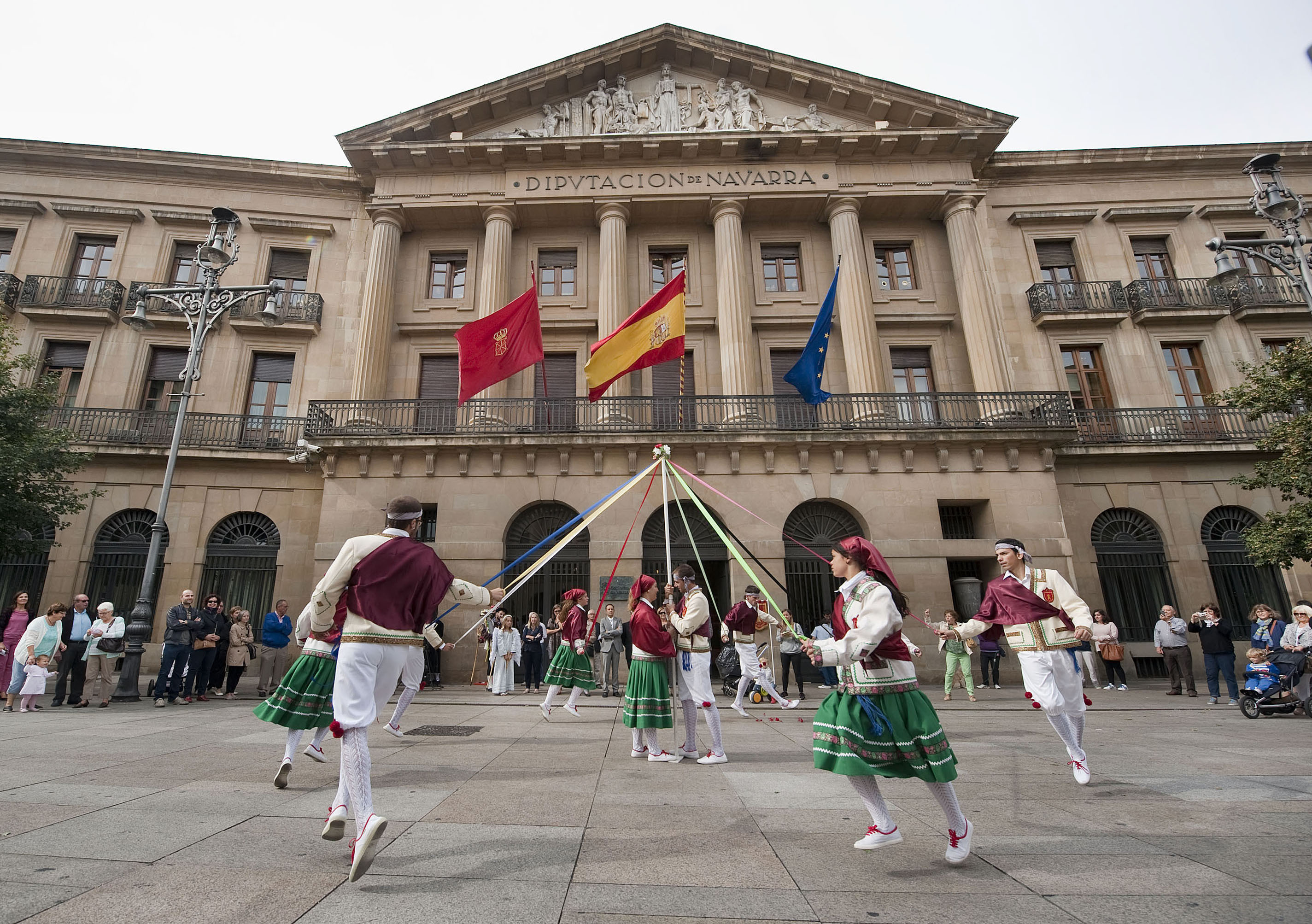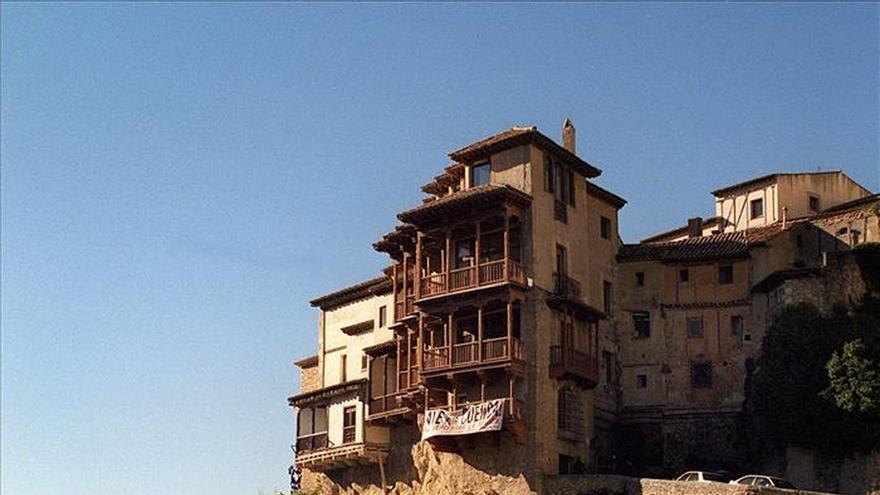Bien de Interés Cultural
Spanish law book " Del patrimonio histórico Español " ( From Spain's historical heritage ) refers to the protected cultural goods as Bien of Interest Cultural. For Bien of Interest Cultural not only material goods can be explained, but also knowledge and activities that express a significant cultural tradition of the Spanish people.
Legal framework
The protection of cultural goods was regulated in Spain by 1985 through different statutes. The Constitution of the Second Spanish Republic from 1931 already contained in Article 45 of the job of the state to preserve the historical and artistic heritage of the country. In the Constitution of 1978, the Protection of Cultural Property was enshrined in Article 46. The constitutional mandate was met by a comprehensive law book in 1985. There was reference is made explicitly to parts of the existing conflicting laws. An implementing the 1986 regulates the uniform application of the law throughout the kingdom and the establishment of the necessary government authorities. The individual Autonomous Communities have also adopted rules on their territories. Apart from some special areas, such as the Schatztaucherei in the coastal waters, the responsibility for the protection of cultural property in the Autonomous Communities, the case of the local authorities ( Ayuntamiento ) should be supported.
Classification of cultural goods
The 1985 Act divides the cultural assets into different categories:
- Bienes inmuebles ( Localized Cultural Heritage ) Monumento histórico
- Jardín histórico
- Conjunto histórico
- Sitio histórico
- Zona arqueológica
Bienes inmuebles
As Bienes inmuebles refers to all non-transportable cultural goods. This is primarily Monumentos históricos ( monuments ). With respect to the Declaration on the Bien of Interest Cultural Categoría Monumento is not the age of the building, but only its architectural or design feature. Also sculptures or sculptures from a size that does not allow his transport without damage to the object are added to the list of Bienes de Categoría Interès Cultural Monument.
The date of creation is not necessarily prevail even in the Jardínes históricos. Of importance for the explanation as Bien de Cultural interest here is the aesthetic, emotional or botanical value.
The Conjuntos históricos it are usually well-defined areas of a castle or a city. However, it is also individual buildings could be included outside these limits as islets (islands ) with.
The sitios históricos one hand, areas where special facilities are located (eg Minas de Riotinto ) or where special events took place or take place regularly ( Alfombras de La Orotava ). As sitios históricos however, areas are designated, in which particular techniques are maintained ( eg nougat de Tacoronte) or customs ( Whistling de la Gomera)
Bienes muebles
All " Bienes muebles " (not fixed works of art ) of the country are to be recorded in a central register ( Inventario general), regardless of whether these works of art for "Bien of Interest Cultural" have been declared or not. It also does not matter whether the art works are in private hands, owned by the church or by public corporations. All works of art that have been recognized as Bien mueble of Interest Cultural or even just in general Inventario and are owned by the church or a public corporation may not reach the market. They can be suitable only to the state, another ecclesiastical institution or entity under public law in Germany.
Patrimonio Etnográfico ( Ethnographic Heritage)
For Ethnographic heritage includes not only mobile and stationary culture goods, but also knowledge and activities that occur as a peculiar expressions of the tradition of the Spanish people. These traditions should be promoted and where they are threatened, least documented in order to get them to posterity. It may be, for aesthetic techniques (eg, textile and lumber processing ) habits (eg certain pattern of decoration, costumes ) or even games and sports (eg Salto de Pastores ). Be Bienes de Patrimonio Histórico Sitio Etnográfico as for the landscapes and sites registered in which they are found or were to be found in the list of Bienes de Interès Cultural.
Patrimonio documental y bibliográfico ( documentary and bibliographic heritage )
The law includes special protection of archives, libraries and museums. Through a precise definition of all types should be protected from historical documents, regardless of whether they are in private hands owned by religious or other public or state institutions. Not only the existence of libraries and museums, but also their buildings fall under the protection of the law.
Proceedings for a declaration of cultural property to Bien of Interest Cultural
Cultural assets that were so declared a National Monument before 1985, before the entry into force of the Code " Del patrimonio histórico Español " are explained in the transitional provisions of the Act to Bienes of Interest Cultural. This regulation affects both individually named buildings and groups of buildings, on the other hand, all fortifications ( castillos ), walls ( murallas ) and Tower ( Torreones ) and their ruins, beyond all attached to buildings crest or sign, a special kind of wayside ( Cruz de término ) at the boundaries of urban areas and special occurring in northwestern Spain granary ( hórreo ) each if they are older than a hundred years. In general, a historical monument since 1985 are all places where there are petroglyphs.
The process which leads to a building, a garden, a picture or a local tradition for Bien of Interest Cultural explains, is governed by the executive order of 1986. The Comunidades Autónomas start from or at the request of any person ( a relation to the object need not be given when the applicant ) the investigation as to whether an object, whether it is in public or private property, for Bien of Interest Cultural to be explained. The Ministry of Culture in Madrid also starts its own initiative or at the request of any person reviewing the determination of whether an object is already protected by law from 1985 collection belongs. ( Is this ruin a ruin of a castle the order is under protection or was it " just" a unfortified mansion? ) In addition, the Ministry of Culture in Madrid is responsible for all objects that are owned by the Spanish State or even for different archaeological sites on land and in water. With the beginning of the investigation, the object is added to the list of preventive Bienes of Interest Cultural. This affects not only the object itself, but also other connected to it or him to associate objects. (eg not only the building of the Town Hall is affected but also the transportable paintings and sculptures inside the building, the furniture of the meeting room, the carved doors and wrought iron banisters. ) All stakeholders (owners, owners, neighbors, city council, etc. ) will be notified of the registration and the preliminary grounds for initiating the investigation are published in the Law and ordinance Gazette ( Boletín Oficial ). The object remains registered until it is explained to either Bien of Interest or Cultural definitely can not be termed as such in this preliminary state. This decision often drags on for years. The investigation is carried out by panels whose composition is well defined in the ordinance. These bodies are also experts who are not employees of the competent authorities. In the Annex to Implementing Regulation there are lists of questions to be used to describe the objects to be examined and to qualify. This is not only about the age, the conservation status of an object or the height of artistic value, but also its social significance and its meaning for the environment. Here also the neighboring buildings can be included to prevent, for example, in the delineation of the building that the object like a foreign body is in a him or no longer appropriate environment. The questionnaires are designed to promote an objective assessment and make the reasons for the decision for or against a qualification as Bien of Interest Cultural transparent. The result of the investigation will be published (as processing of these questionnaires ) as reasons for the decision in the Law and Regulation Journal of the respective Autonomous Community. Already in preventive entry and in all other stages of the proceedings may be brought against any part of a decision contradiction. Even for an opposition is needed for proof of dismay. (ie, each can, for example, argue that the designation of the heritage not applicable or that the classification or stylistic assignment faulty or the social contexts are not given. ) In cases of dispute, there is a court decision, which of course also in the Law and Ordinance Gazette is published.
Further regulations
The Act also contains provisions that are to ( similar to the German cultural heritage protection law ) prevent export of cultural goods and ensure the financing of cultural protection, as well as the threat of sanctions for breaches of the law.









